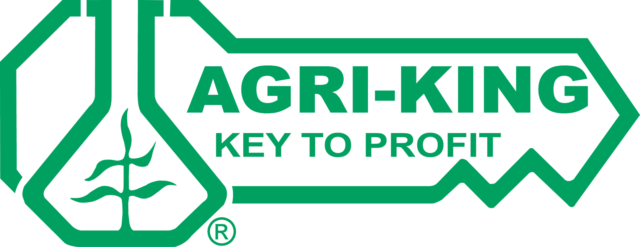“Managing vaccine protocols and the inventory involved in any cattle operation can be difficult. The largest reason for this is that it is hardly ever a black-and-white process,” says Matt Harris with Merck Animal Health. “Your veterinarian will guide you based on your unique situation, as there are many diseases you may need to pay extra attention to in order to prevent versus other operators who may not.
“The type of beef operation (cow-calf, stocker, feedyard), source of cattle (closed herd, purchased cattle) and historical health issues within the herd all are part of your specific needs in vaccine management in your herd.”
Finding a good veterinarian near your cattle herd is always essential in allowing you to have a qualified animal health technician nearby if ever needed. Veterinarians are always an excellent resource to have, as they are not only able to help with animal medical issues but can assist with advice and knowledge on proper animal care.
Harris recommends four different vaccinations vital for a healthy herd, along with the background for the producer’s knowledge.
-
Five-way respiratory and reproductive viral vaccines (Type 1 BVD, Type 2 BVD, IBR, PI3 and BRSV): Many of the beef industry’s economic problems due to health are related to respiratory and reproductive viral pathogens.
An adequate response through vaccination with a “five-way viral” vaccine helps to reduce these issues greatly. It can also help you market your cattle. There are two basic differences in how these products are manufactured: modified live and killed virus. Each of these has strengths and weaknesses in different ages of cattle. It is important to review what is best for your herd.
-
Clostridial (“blackleg” or “seven-way”) vaccination: Clostridial vaccination should be utilized in all operations where vaccination history is not known or where cattle have not been vaccinated properly in the past 12 months. The basic “blackleg” vaccine is a seven-way.
Depending on your herd’s environment or the environment of purchased cattle, two antigens, “red water” and tetanus, may also need to be included.
-
“Pasteurella” (Pasteurella multocida and Mannheimia haemolytica): Both of these bacterial respiratory pathogens are commonly referred to as pasteurella. Successful pasteurella protection starts in the calf prior to weaning, as the stress of weaning is the most common point in a calf’s life where pasteurella rears its ugly head.
Most respiratory disease is diagnosed as one of these two pathogens; however, it has been demonstrated that the majority of the time, there is a precursor to the disease, such as one of the five-way virals. There are products on the market that combine all five virals (BVD type I and II, IBR, PI3, BRSV) with these pasteurella antigens to give convenient options of protecting against these very costly industry diseases.
- “Vibrio and Lepto” or “VL5” (campylobacter fetus and leptospirosis): Like pasteurella, these antigens commonly come manufactured in combination with five-way viral products for convenience when vaccinating replacement heifers or cows. These products should be utilized in the vast majority of the cow herd to fight these reproductive pathogens.
Harris has a few other tips on vaccine protocol as well:
- Handle and store vaccines properly. If they get too hot or cold, it may render them useless or even harm the animal.
- Give according to label directions: IM = intramuscular and subcutaneously, SubQ or SQ = under the skin.
- Become a BQA-certified producer. BQA producers are trained in proper vaccine handling and administration. It is also the producer’s statement to the consumer that he or she knows how to produce beef in a safe, humane and wholesome way.
Meredyth Jones, associate professor of large animal internal medicine at Texas A&M University College of Veterinary Medicine, provides other suggestions in spotting illness in a herd.
“The main things to watch for in the cow-calf herd are lameness, weight loss or being slow to come up and eat, and calving problems,” she says. “Most diseases that can affect a mature cow herd can be prevented with good husbandry and management.”
Being vigilant and observant when evaluating the health of a herd means more efficient animal welfare and a more profitable business for the future.
Multiple factors are involved when choosing vaccinations for a thriving herd. Herd health is crucial to a rancher’s success, but so is knowledge of the herd as well as those resources available to you.
“The end result of vaccination not only has to do with proper use of them, but they must be used in animals with functioning immune systems,” says Harris. “Work with your veterinarian to develop a total herd health program to meet your production and economic goals.
Simply put, any immunity afforded by vaccination can and will fail if the animals’ environment and health are not managed properly. Vaccines are a tool for successful beef production. There is no ‘silver bullet’ in managing disease through vaccines. It has to be an all-encompassing approach.”
Consult your veterinarian to come up with a program for your herd. As these cattle move on to feedlots and other areas of the supply chain, they are proven to be healthier and thus are more marketable.
Vaccinations and proper medication administration can and will make your operation more profitable, as there is a distinct advantage when selling weaned calves when two rounds of shots have been administered.
“A little bit of input can go a long way to keep your cow herd from having trouble,” Jones says. ![]()
PHOTO: Most diseases that can affect a mature cow herd can be prevented with good husbandry and management. Staff photo.

-
Stephanie Lastovica
- Freelance Author
- College Station, Texas
- Email Stephanie Lastovica











